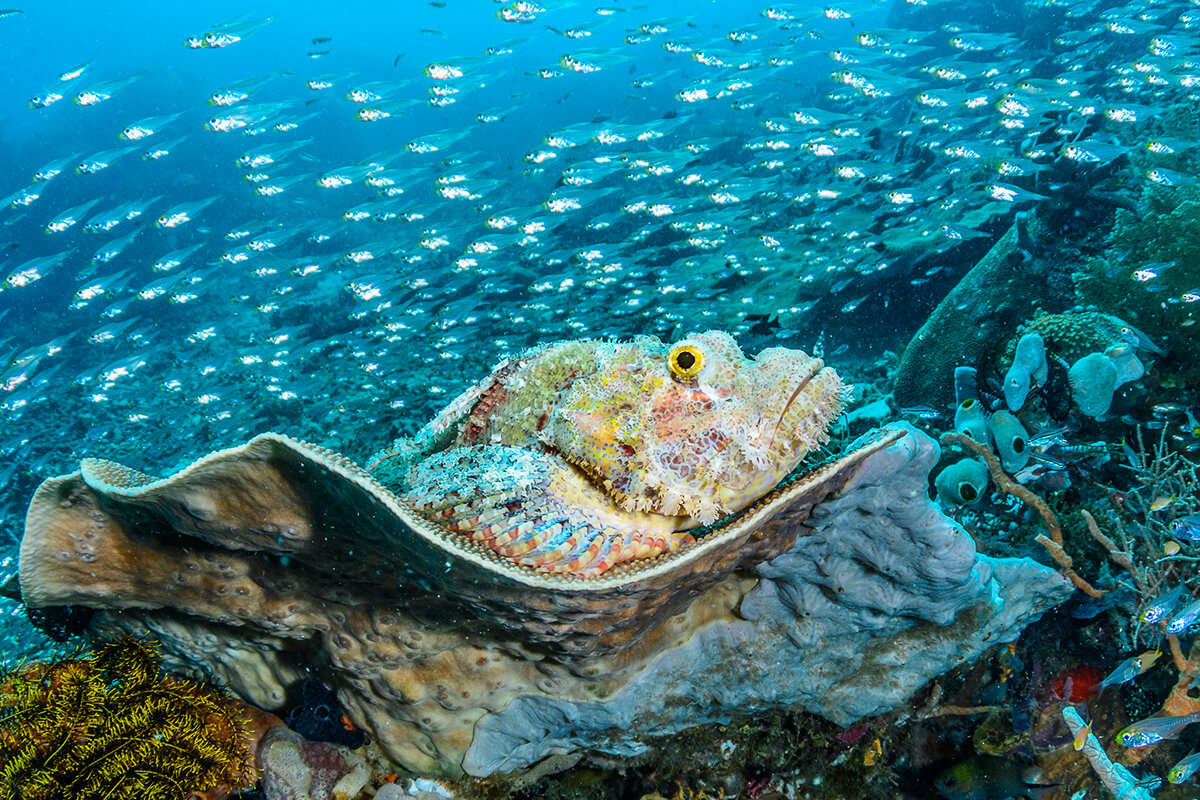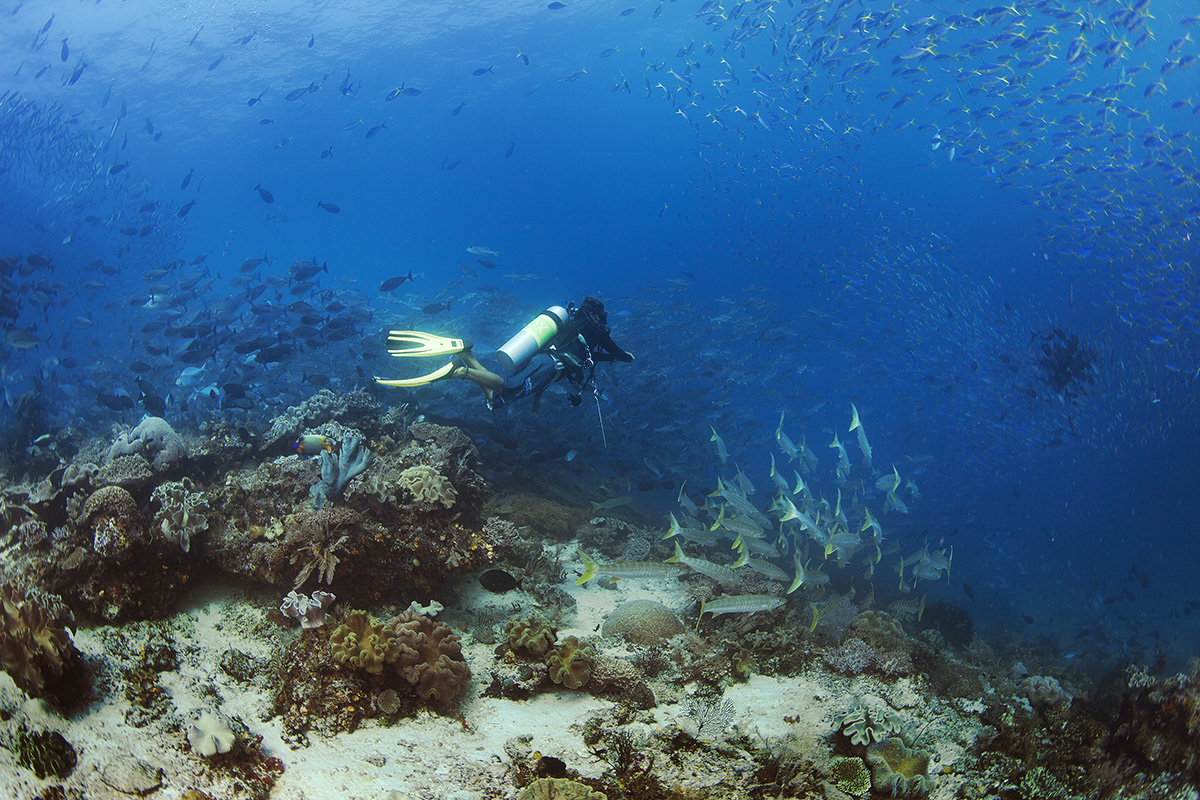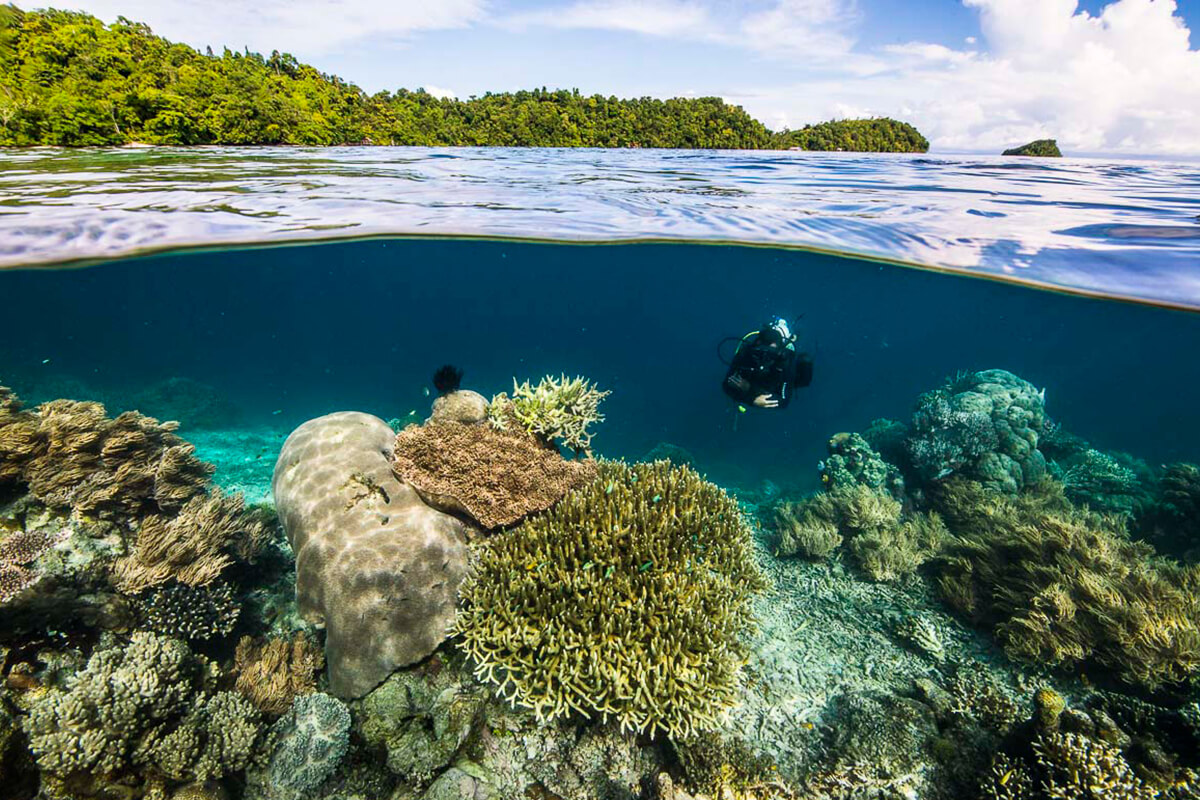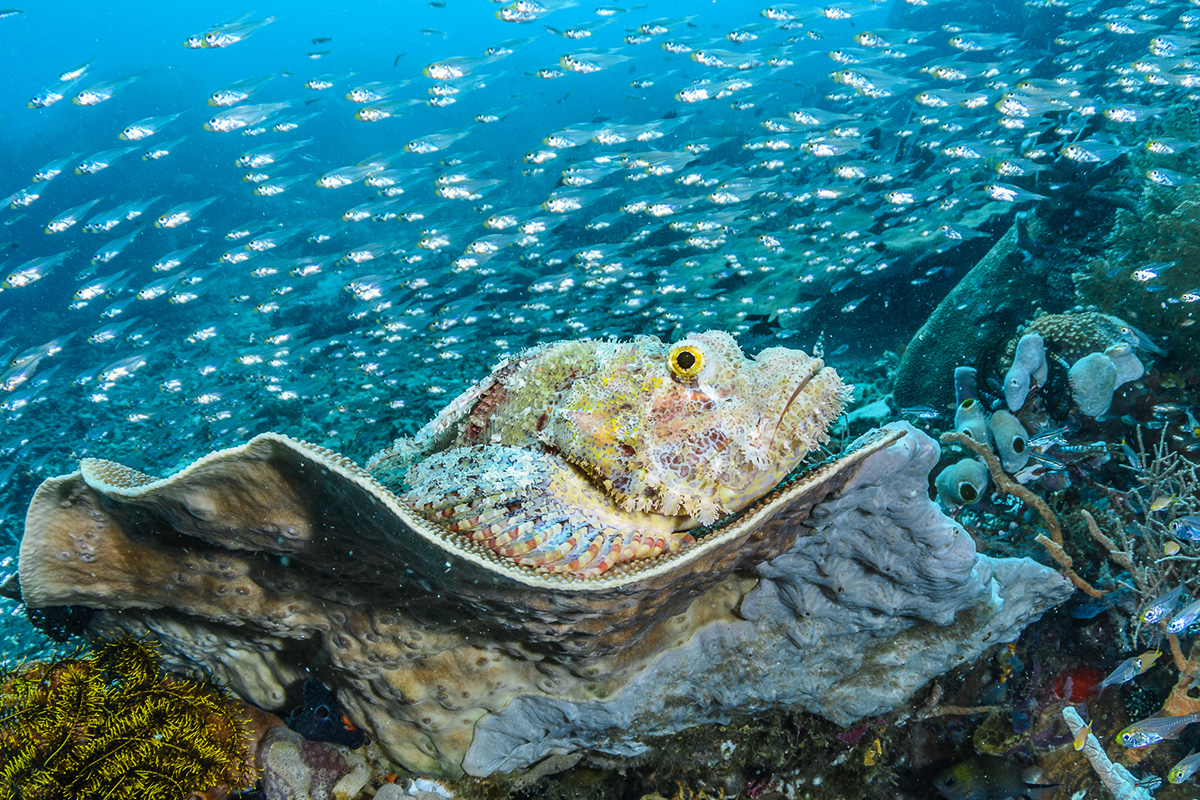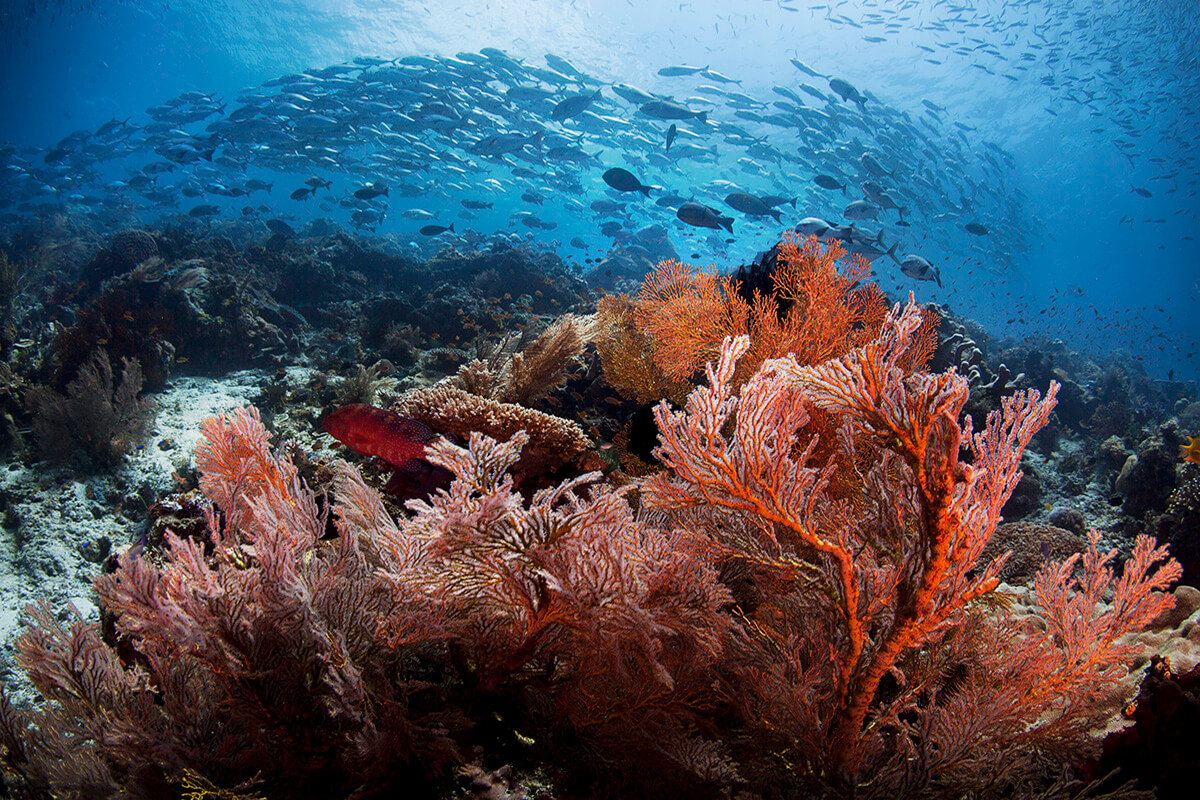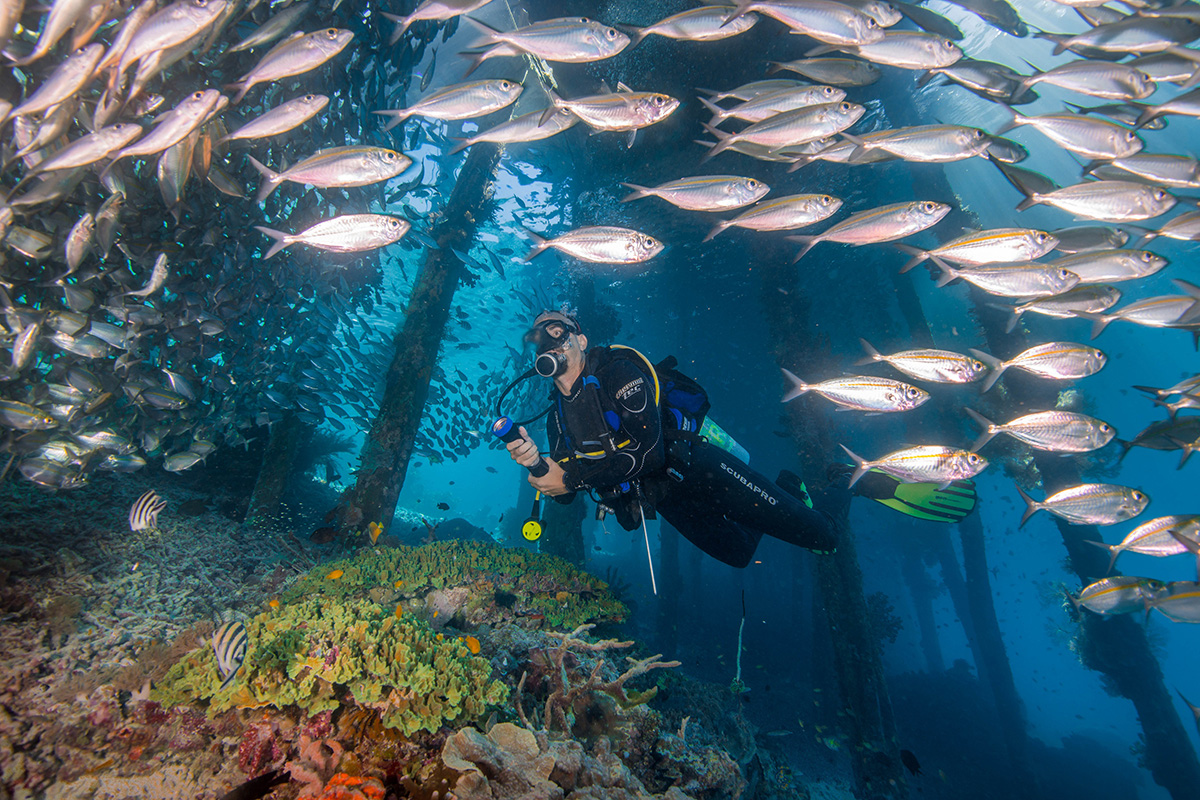Learning About the Currents in Raja Ampat
The currents in Raja Ampat are a defining feature of the region and also one of the reasons it is such an incredible diving destination. They are created by the flow of water through the narrow straits and channels that connect the various islands in the archipelago. Understanding these currents is crucial for safe and enjoyable diving in Raja Ampat. Here’s more information about the currents in this area.
Factors Influencing Currents
The currents are influenced by a combination of factors, including the tides, wind, and of course the unique underwater topography that draws divers in from all over the world. Raja Ampat’s underwater topography includes deep walls, channels, and underwater pinnacles. These formations can cause upwellings and downwellings, which contribute to the complexity of the currents. The interaction of all these factors can lead to currents that change direction and strength over short periods.
Raja Ampat experiences semi-diurnal tides, which means there are typically two high tides and two low tides in a 24-hour period. The currents are strongest when the tide is highest, which means most dive centres will plan their dives around the tides. Low tide, or slack tides, tend to be the best time to dive for both safety and visibility.
Why the currents are so important
The strong currents bring in nutrient-rich waters from the open ocean, which is one of the reasons Raja Ampat is a hotspot for marine biodiversity. The currents help sustain the rich marine life and coral reefs in the area thanks to the plankton and small marine organisms they bring in. Larger fish and pelagic species are attracted by these rich food sources making it an excellent place for encounters with schools of fish, sharks, manta rays, and other exciting marine life.
Diving Experiences
Divers can experience a range of diving conditions, from gentle drift dives along the walls to more challenging dives in strong currents. These varying conditions offer something for divers of different skill levels and preferences. It also depends on the time of year and the stage of the moon cycle as the highest tides and therefore strongest currents occur around full and new moons.
From October to May is considered the best time to dive in Raja Ampat as there is less rain and the seas are calmer. This also means less rain and better conditions on the dive boats. The best thing you can do is to dive with experienced guides who are familiar with the local currents. They can help you plan dives, choose appropriate sites, and provide guidance for navigating the currents safely.
The currents are really what makes Raja Ampat the world’s best diving destination and diving in these currents can be an exhilarating and rewarding experience for those with the necessary skills and knowledge. However, it’s vital to respect the power of the currents and the fragility of the underwater environment, and always prioritize safety when diving in this exceptional destination. Our professional dive instructors and guides at Papua Paradise Eco Resort are here to support you in this incredible dive experience. For more information or if you have stories of diving in Raja Ampat, we would love to hear from you in the comments box below.

